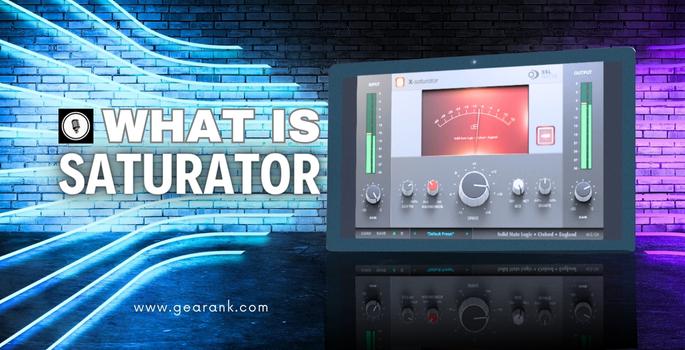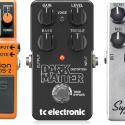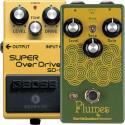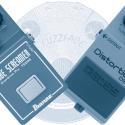What is a Saturator in Music and How to Use It?

What is a SaturatorA saturator is a tool or plugin that adds harmonic distortion to an audio signal to improve the character of the resulting sound. |
An audio saturator works by overloading the audio signal, which causes the waveform to clip, resulting in new and pleasant sounding harmonics. These new harmonics add warmth and character to the sound, making it more pleasing to the ear.
Audio saturation can enhance the richness and timbre of your audio, making it sound more vibrant and full. It also helps to control dynamics and add sustain to individual tracks.
There are different types of audio saturation, such as tape, tube, and transistor, each with unique sound and characteristics.
Importance of harmonic distortion in music production
A saturator is used for harmonic generation, which results in harmonic distortion. Harmonic distortion refers to the process of altering an audio signal by adding or enhancing its overtones. This modification changes the sound's character and timbre, making it richer, warmer, and more dynamic.
Distortion can also augment a sound's clarity and presence, making it stand out in a mix. It is frequently used to simulate the analog sound of old devices such as tape saturation, tube saturation, and transistor saturation, which have distinct qualities sonically.
What is saturation in music? Here are some examples of how distortion can be used in music production:
-
Adding tube saturation to vocals to make them sound more powerful and emotional.
-
Applying distortion to guitars to create different tones and effects, such as overdrive, fuzz, and crunch.
-
Enhancing the drum bus and bass with subtle distortion to make them sound more punchy and lively.
-
Using distortion on synths and basses to add thickness and harmonics to them.
Harmonic distortion is a popular effect that uses various tools and plugins like saturators, exciters, compressors, and EQs. However, using distortion judiciously and in moderation is crucial, as excessive distortion can result in a harsh, noisy, or muddled sound.
Types of Saturators
Analog Saturators
Hardware saturation simulates analog equipment like tape recorders, tubes, channel strip units, and transistor circuits to add harmonic distortion to audio signals. These can include even harmonics, odd harmonics, or a combination of both - even and odd harmonics.
Digital Saturators
Digital saturators (saturation plugins) use algorithms to simulate analog saturation on audio signals. They mimic the behavior of analog devices such as tape, tubes, and transistors.
How Saturators Work
Transistor Saturation and Tube Saturation
Solid state preamp transistor saturation occurs when a transistor circuit is overdriven by the incoming electrical signal, causing the waveform to clip and create additional harmonics.
This results in a gritty and fuzzy sound, which adds character, presence, and aggression to the sound.
Tube preamp saturation is achieved by overloading a tube circuit, which adds harmonic distortion and compression to an audio signal.
This subtle compression and saturation can make a sound richer, warmer, fuller, more dynamic, and expressive.
Tape Saturation
Tape saturation aims to replicate the effect of recording audio to magnetic tape via an analog tape machine. When the input level exceeds the tape's capacity to store the signal, it produces a specific saturation.
This leads to a compressed signal with mild distortion, which adds warmth, richness, and depth to the sound. Tape saturators can also generate subtle variations in frequency, noise, wow, and flutter. These are distinct features of analog tape machines.
Harmonic Excitement
Harmonic excitement is a technique to brighten up tracks by adding upper harmonics to an audio signal. This can make the sound of the audio signal more lively, present, and bright in the mix.
The technique can be achieved through various effects such as saturation, distortion, compression, or excitation. These effects generate new frequencies that are related to the original signal.
Harmonic excitement can improve the sound quality, character, and dynamics of audio signals in music production.
Soft Clipping
Soft clipping is a distortion that gradually restrains a signal beyond a specific threshold. This technique generates a more curved, analog-style distortion with odd-order harmonics that can give your tracks a warmer and more distinct feel.
Additionally, soft clipping can assist in regulating the dynamics of your audio signals and adding more endurance to them.
Benefits of Using a Saturator
Some of the benefits of using a saturator in music production are:
Adds warmth and depth to audio
Saturators can enhance audio signals by adding harmonic frequencies. This results in a richer, warmer, and fuller sound. Saturators can also create subtle variations in frequency response, noise, and wow and flutter, which are the characteristics of analog tape machines.
These effects can add depth and dimension to your mixes, making them sound more realistic and organic.
Enhances harmonics and overtones
Saturators are audio effects that can enhance the upper harmonics and overtones of audio signals, making them sound brighter, livelier, and more present in the mix. This harmonic excitement can improve the sound quality, character, and dynamics of audio signals in music production.
Additionally, harmonics and overtones can help your brain create a phantom fundamental frequency, which may not be audible on some playback devices, making your basslines more audible especially in a dense mix.
Increase perceived loudness
Saturators are tools used to boost the perceived loudness of audio signals without necessarily increasing their volume. They achieve this by applying soft-knee compression, which reduces the dynamic range of audio signals, making them sound more consistent and balanced across the frequency range.
Saturators also enhance clarity and presence in audio signals, making them stand out in a mix.
Creates unique tonal character
Saturators are audio processing tools that add a distinctive tonal character or creative effect to audio signals. Applying saturation of different types can significantly impact the sound produced. There are various saturators, including tape, tube, and transistor, each with different sounds and characteristics. Tape saturators can make audio signals sound warm and smooth, tube saturators can make them sound bright and crisp, and transistor saturators can make them sound punchy and aggressive. Additionally, saturators can emulate the sound of vintage gear, which has its own distinctive sonic qualities.
Saturator Techniques and Best Practices
Using different types of saturators for different instruments
Saturators imitate the sound of various analog devices such as tape, tubes, and transistors. Each device has its unique sound and characteristics.
Tape saturators can make audio signals sound warm and smooth, tube saturators can make them sound bright and crisp, and transistor saturators can make them sound punchy and aggressive.
Depending on the instrument and the desired tone, you can choose the type of saturator that best fits your needs. For example, you can use a tape saturator on vocals to make them sound more powerful and emotional.
A tube saturator can be used on guitars to create different tones and effects, while a transistor saturator can be used on drums to make them sound more punchy and lively.
Using multiple instances of saturators for complex sound
Saturators can be a powerful tool for creating interesting and complex sounds. You can use them in series or parallel to achieve different effects. When used in series, you can apply various types and amounts of saturation to a single signal, producing a more layered and textured sound.
On the other hand, using saturators in parallel allows you to blend the original signal with the saturated signal, resulting in a more balanced and controlled sound. You can also use different types of saturators on various frequency bands to create a more nuanced and detailed sound.
For instance, you can use a tape saturator on the low frequencies, a tube saturator on the mid frequencies, and a transistor saturator on the high frequencies to produce a richer and fuller sound.
Using saturation in moderation
Saturation is a useful mixing tool, but one must use it in moderation as it can easily be overdone. Too much saturation can make the sound harsh, noisy, or muddy and mask other elements in the mix.
It is important to monitor the effect of saturation on your audio signals by checking the incoming signal. You can use a level meter, a spectrum analyzer, or a loudness meter to check the level, particular frequency response, and loudness of your saturated signals and compare them with the original signals.
You can also use your ears to listen to the effect of saturation on your mix and adjust the amount and type of saturation accordingly.
Using saturators during mixing and mastering
Saturators are useful for mixing and mastering stages of music production, but they are used for different purposes and settings. During mixing, saturators can enrich individual tracks or groups of tracks by adding warmth, depth, character, and presence.
For this stage, saturators can be used with more aggressive settings, as they can create more noticeable and creative effects. During mastering, saturators can improve the overall sound of the mix by adding glue, cohesion, and loudness to it.
For mastering, saturators can be used with more subtle settings, as they can create gentler and more transparent effects.
Conclusion
Saturators are audio effects that can add harmonic distortion and compression to audio signals. They simulate the sound of analog devices like tape machines, tube amps, and transistor circuits. Saturators can enhance audio signals' sound quality, character, and dynamics in music production.
They add warmth, depth, presence, and loudness to them. Depending on the type and amount of saturation applied, they can create unique tonal character for audio signals.
Saturators can be used during music production's mixing and mastering stages but with different settings and purposes. They are versatile and powerful mixing tools that can improve your music production skills and creativity.
You can experiment with other types of saturators for different instruments and sounds. You can also use multiple instances of saturators in series or parallel or on various frequency bands to create more complex and exciting sounds.
Now that you know the answer to what is a saturator, don't go overboard with it. It is important to use saturation in moderation. Keep an eye on the effect of saturation on your audio signals and mix. With these tips and a better understanding, you can use saturators to enhance your music production and create unique sounds.
If you're looking for a way to control dynamics without affecting the harmonic content as much, you might want to look into what is an audio compressor.
Contributors:
- Alexander Briones - Editor
- Jerry Borillo - Illustrator












